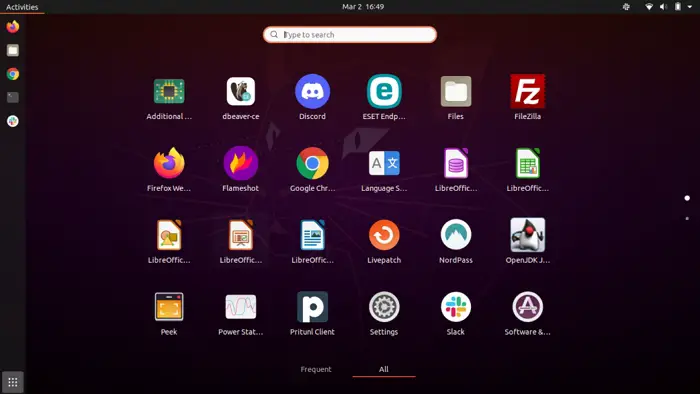In a significant tech advancement, the Indian Defense Ministry has decided to swap the conventional Windows OS with the ultra-secure Maya OS on its PCs. This tactical shift aims to enhance cybersecurity in the ministry and safeguard critical data.
Maya OS, developed by cybersecurity and operating system experts, gained attention for its advanced security features and robust defense against cyber threats. The Indian Defense Ministry’s move to Maya OS shows its commitment to safeguarding data and maintaining a solid defense.

The news is unsurprising as the decision was taken in June 2022, but recent developments and movements might have increased the chatter on social media and news.
Here are details of the adoption of Maya OS in the defense.
- Defense Ministry’s Concern: The Defense Ministry is addressing the migration from Windows OS to Hardened Linux on internet-facing devices due to increased security breach incidents.
- Guidelines from CIRA: The Defense Computer Incident Response Team (CIRA) issued guidelines emphasizing the need to enhance cybersecurity. Windows-based environments have been identified as a cause of data leaks and malware compromises.
- Immediate Steps: The headquarters office has directed the implementation of specific measures on internet-facing devices:
- Adoption of a hardened Linux Operating System.
- Usage of ‘MAYA,’ a specially hardened Linux OS designed to resemble Windows 10.
- Deployment of the ‘CHAKRAT’ solution, an integrated framework for automated audit response of network endpoints.
- Security Adherence: The Competent Authority has instructed all sections in the main office and sub-offices to adhere to the security measures mentioned above, focusing on using Hardened Linux on internet-facing devices.
What is Maya OS?
The letter issued by Sr ACGDA (IT) on 31/7/2023 talks about the installation of hardened Linux ‘Maya OS/Ubuntu on all the internet-connected PC except for VCs being used for AEBAS, Kavach app, VC, training, etc., as these applications do not run on Linux).
It implies that Maya OS builds on Ubuntu, a Linux distribution derived from Debian and predominantly made of freely available open-source software. Ubuntu is formally distributed in three versions: Desktop, Server, and Core, tailored for internet-connected devices and robots.
Along the same lines, the Indian Government is also building its own browser version. India’s Ministry of Electronics and Information Technology (MeiTY) has launched the Indian Web Browser Development Challenge.
Can Maya OS be a success?
It’s important to note that the success of adopting Maya OS will be determined by its actual implementation, performance, and the Defense Ministry’s ability to maintain and update the operating system securely over time. International standards and best practices provide a framework for evaluating such initiatives, but each context and situation may have unique considerations.
Overall, the Indian Defense Ministry’s decision to replace Windows with Maya OS can be viewed as a proactive step in line with contemporary global efforts to strengthen cybersecurity and enhance data protection, particularly within critical government sectors.
In a significant technological development, the Defense Ministry has announced its decision to replace the traditional Windows operating system with the highly secure Maya OS on its computers. This strategic move aims to bolster cybersecurity measures within the ministry and ensure the utmost protection of sensitive information.
Maya OS, developed by experts specializing in cybersecurity and operating systems, has gained attention for its advanced security features and robust defense mechanisms against cyber threats. With the rising concerns of cyber espionage and attacks on government institutions, the Defense Ministry’s decision to transition to Maya OS reflects its commitment to safeguarding critical data and maintaining a robust defense posture.
Key Points:
-
Enhanced Cybersecurity: Maya OS is renowned for its enhanced cybersecurity protocols, including advanced encryption algorithms, real-time threat detection, and isolation mechanisms that reduce the risk of malware infiltration. By adopting this operating system, the Defense Ministry aims to mitigate the vulnerabilities associated with conventional operating systems.
-
Protection of Sensitive Information: As the custodian of classified information, the Defense Ministry places paramount importance on protecting sensitive data from unauthorized access. Maya OS’s stringent access controls and secure boot processes align perfectly with the ministry’s stringent security requirements.
-
Reduced Attack Surface: Maya OS follows a minimalist approach, which means it has a smaller codebase and reduced attack surface compared to more complex operating systems. This inherently lowers the risk of exploitable vulnerabilities, providing a more secure environment for critical operations.
-
Customization and Adaptation: Maya OS’s open architecture allows customization and adaptation to the Defense Ministry’s specific needs. This flexibility ensures that the operating system can be tailored to the ministry’s unique security and operational demands.
-
Transition Process: The Defense Ministry has outlined a comprehensive transition plan to smoothly migrate its computer systems from the existing Windows environment to Maya OS. This plan includes training for personnel, data migration strategies, and thorough testing to ensure minimal disruption during the transition phase.
-
Collaboration with Experts: The Defense Ministry’s decision to adopt Maya OS comes after a thorough evaluation and collaboration with cybersecurity experts, software developers, and technology specialists. This collaborative effort ensures that the transition is executed seamlessly and effectively.
The move to adopt Maya OS reflects the Defense Ministry’s commitment to staying at the forefront of technological advancements while prioritizing national security. As cyber threats continue to evolve, such proactive measures are crucial to maintaining a strong defense posture in the digital age.
With this strategic shift towards Maya OS, the Defense Ministry sets a precedent for other government entities and organizations to prioritize cybersecurity and embrace innovative solutions that can safeguard critical information in an increasingly complex and interconnected world.
Leave a Reply